#7 Blog: Working from home: is it a curse, a blessing, or both?
During the lockdown, the home became the center of our daily routine: work, studying and leisure took place within our own walls, unavoidably. Some aspects of this time were positive and others more negative, depending on whom you asked. This also applies to working from home (WFH), i.e. the relocation of the workplace into one’s own home. In our survey, we asked respondents to evaluate their current situation while working remotely to find out how well WFH works under the exceptional circumstances of the COVID-19 pandemic.
Around 1,353 persons completed the question module about WFH. The respondents worked either completely or at least partially from home. 22 % of the respondents were male and 78 % female. The questions regarding WFH covered different aspects such as (i) advantages and disadvantages of WFH, (ii) quality of working time and work place, and (iii) (anticipated) changes concerning work and childcare. We now summarize our most important findings.
Advantages and disadvantages of working from home
WFH entails both advantages and disadvantages. Not having to commute every day and better reconciliation of family and work life are usually conceived as benefits from WFH. At the same time, the contact to supervisors, managers or colleagues might be more limited. Another potential drawback is the blurring of boundaries between work and leisure time.
In our survey we asked women and men working remotely, how much they agree or disagree with statements regarding WFH. They were able to tick “Strongly agree”, “Somewhat agree”, “Somewhat disagree” or “Strongly disagree”. Figure 1 and 2 shows the findings by household type and gender (for men and women living in couple households with children under 15). The smaller the distance on the axis to the center, fewer respondents on average agreed with the statement. A clear picture emerges from Figure 1: Single parents and couples with children found it more difficult to concentrate while WFH, to complete tasks better at home than at the office, and to reconcile work and family life. Single households and couples without children under 15 found these aspects on average easier than their peers did. In contrast, the communication with supervisors, recognition of their own work performance by them, as well as the contact with colleagues, does not depend on the household type that strongly. Figure 2 shows the difference between male and female respondents living in couple households with children under 15. Women encountered more difficulties to concentrate and complete their tasks while WFH due to the closing of child care facilities and schools and the fact that it was mothers who mainly took over.
Fig. 1: Average agreement to statements on advantages and disadvantages of home office during lockdown by household type
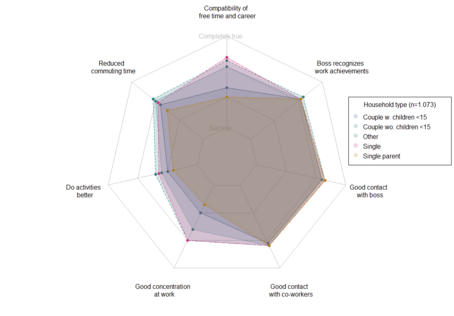
Fig. 2: Average agreement to statements on advantages and disadvantages of couples with kids younger than 15 years
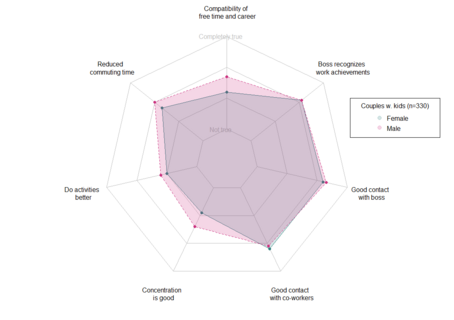
Changes in the quality of working time and work place
Drawing a clear boundary between work and leisure time during the lockdown proved to be difficult for some respondents. Depending on the type of employment situation (contractually agreed working hours), the start and end times of work could be scheduled individually, where full-time employees were least flexible (see Figure 3). Taking one or two hours off on short notice for personal activities (e.g. eating, personal hygiene), household chores (e.g. cooking, cleaning) or childcare appeared to be easier than at the usual workplace. However, some gender disparities can be noticed. Figure 4 shows that fewer women had the possibility to take time off on short notice for their leisure activities, whilst men found it generally somewhat easier to take time off for any activity.
Fig. 3: Set start and end time of work
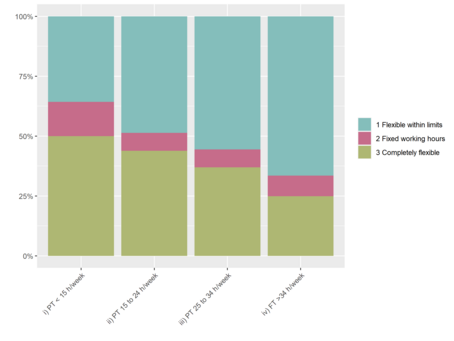
Fig. 4: Taking 1 to 2 hours off work for other activities on short notice
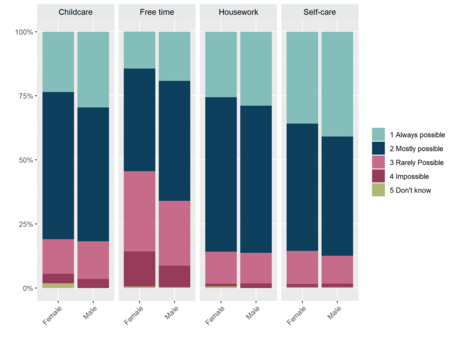
The blurring of boundaries between work and leisure time becomes more prevalent when WFH. This is confirmed by the indicator for quality of working time and work place, as shown in Figure 5 and 6. Again the experience differs by household type on average. Fewer single parents had their own room to work from, worked less often during agreed working hours and had more difficulties separating work from leisure time (Figure 5). Single households found it easier to separate work from free time, and were also less likely to work on weekends or do overtime while WFH. Couple households with children under 15 had a similar experience to single parents. Here again, we also see that gender differences prevail. Mothers indicated that they had more difficulties with the blurring of boundaries between work and leisure time than fathers. Mothers were more likely than fathers to work outside working hours, overtime, and on weekends. Men more often had their own room, where they could close the door to work during official working hours, as compared to women.
Fig. 5: Average agreement to statements on the quality of working time and work place during home office by household type
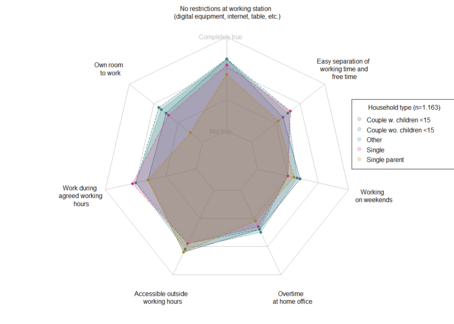
Fig. 6: Average agreement to statements on the quality of working time and place of work during home office in couple households with children younger than 15 years of age
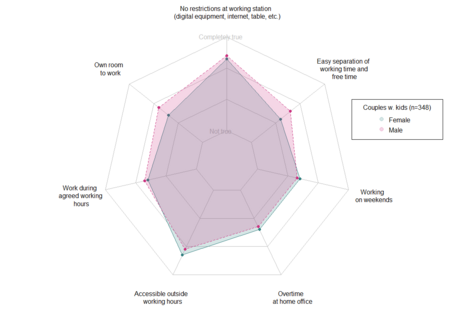
Child care and working from home
Combining child care and work during the lockdown was a difficult task, especially for women. Out of 529 respondents with children under 15, 25% of women stated that their partner took care of the children during their working hours, 30% said that the children took care of themselves, while 38% stated that they supervised the children in the same room while working. For men this picture is rather different, as shown in Figure 7. 51% of men reported that their partner was looking after the children, 27% that the children were keeping themselves busy and only 19 % stated that they were supervising their children in the same room. These results might at least partially explain why women have more difficulties to concentrate on their work compared to men.
We further asked how satisfied the respondents were currently with work, where women were less likely to answer “very satisfied” than men. 28% of women stated that they were “rather not satisfied” or “dissatisfied”, in contrast to 19% of men being (rather) not satisfied with work (see Figure 8).
Fig. 7: Childcare during lockdown
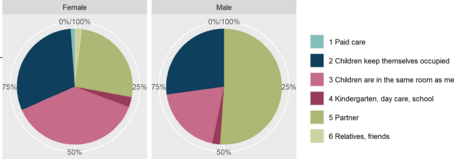
Fig. 8: Satisfaction with work
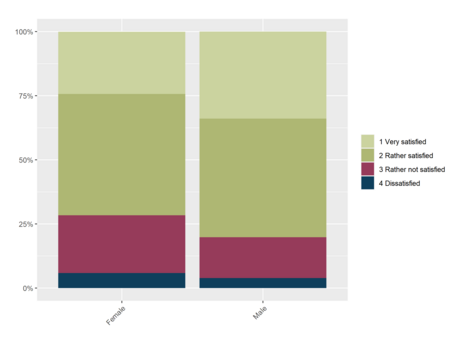
Is WFH here to stay?
When asked whether the respondents will work more often remotely after the lockdown, both men and women felt that this was “more likely”. WFH is still better than not being employed at all. However, while our results give insights on how in particular parents coped with the situation of WFH and child care duties, the findings cannot be transferred 1:1 to WFH under “normal” conditions. Working remotely during the lockdown was very challenging, especially for families with children and here again especially for women. The notion that gender roles prevail also during unusual times can be seen with regard to the division of responsibilities for child care and “the right to work in peace” can be confirmed rather than rejected from our survey. WFH should not be regarded as a promising instrument to improve the reconciliation between family and career. Even though it might help some families to better combine child care responsibilities and work, working remotely still puts more burden on mothers than on fathers. The importance of the expansion of high-quality and affordable childcare facilities must once again be clearly emphasized to ensure more gender equity at home and at the labor market.
